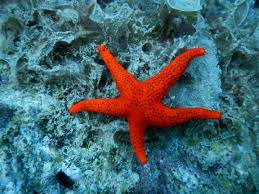The Earth is a water world, covered by oceans on over 70 percent of the surface. However, humans have only discovered and explored five percent of the oceans. This leaves a plethora of features and creatures that are waiting to be discovered and shown to the world to expand people’s knowledge of the oceans.
Deep sea creatures are very unique and almost alien, from the Anglerfish to the ever-strange Blobfish. With 95 percent of the ocean still undiscovered, there must be even stranger creatures lurking in the depths.
Scientists have recently revealed a newly discovered species from a past expedition to the ocean surrounding Antarctica, called the Antarctic Strawberry Feather Star, scientifically called Promachocrinus fragarius. This elusive species has not been spotted enough times to get solid information about it, but the star seems to be related to Echinoderms such as Starfish and Sea Cucumbers. The Antarctic Strawberry Feather Star has 20 arms around a rounded, strawberry-shaped central disc with a radial body form, and their hue ranges from purple to deep red. The arms are very long and end in a wispy, feathered manner. Smaller arms protrude from the central disk and have less of a feathered appearance. They live up to 3,840 feet underwater, far from the reaches of the general observer.
Researchers also went on a deep dive into a trench off the coast of Japan and recently released some of their most exciting findings. Footage showed ghostly white snailfish swimming along the seafloor over five miles below the surface. The fish were recorded by an unmanned ROV camera and seem to be a new, undocumented type of snailfish. At 27,349 feet below surface, these fish were over 500 feet deeper than any fish ever recorded. Researchers were even able to capture a few of the snailfish and bring them up to the surface on the same expedition. This also makes the new snailfish the deepest fish ever caught by humans to date.
The discovery of new animals living deep in the ocean is exciting news but is also just a small part of the huge discoveries being made, including seafloor features such as seamounts and hydrothermal vents, in addition to new chemicals being found in deep habitats that are reason for even further exploration. It seems as though each time researchers dive into the ocean, there is more and more to be discovered and explored.
The continued exploration of the deep sea draws even more attention to the peril that this ecosystem is in. Coral reefs are found bleached and dead, trash is discovered at new depths, and more species are being lost to extinction each day. If people want to keep discovering new creatures in the ocean, they also need to care for the ocean and keep it thriving.



